Pablo Ortiz Monasterio says that «Frida became familiarized with photographic techniques and the basic principles of composition» (Pablo Ortiz Monasterio, p. 16). For that reason, the artist registered and collected many images that served as models for her artwork. Some of them were taken with another purpose and with time were used as references for her paintings. In this activity we can take notice of some examples of photographs that worked as a model for Frida, which are in display at the Frida Kahlo. Sus fotos exhibit.
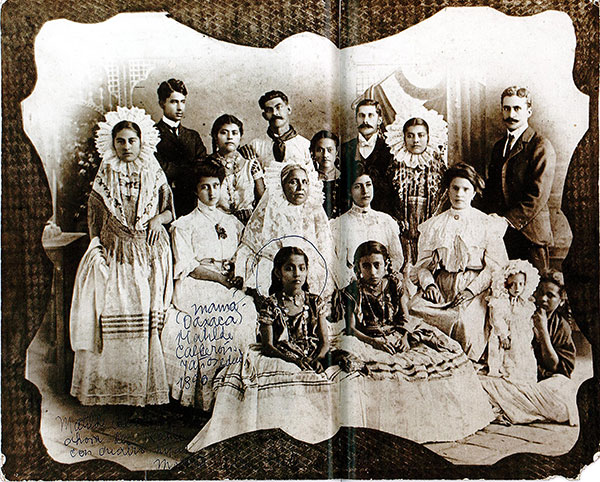

Family of Matilde Calderón González (Ricardo Ayulardo, n. d.) / Diego On My Mind (1943)
One of the biggest influences on Frida’s life and work was her mother’s family, which was expressed in many ways, including her clothing. Therefore we observe that the “tehuana” costume as well as the European Frida dress are present in the portrait of her ancestors. « In the set of photographs pertaining to Matilde Calderón, Frida’s mother, we can immediately see where the artist’s taste and style of dressing came from.» (Pablo Ortiz Monasterio, p. 16).
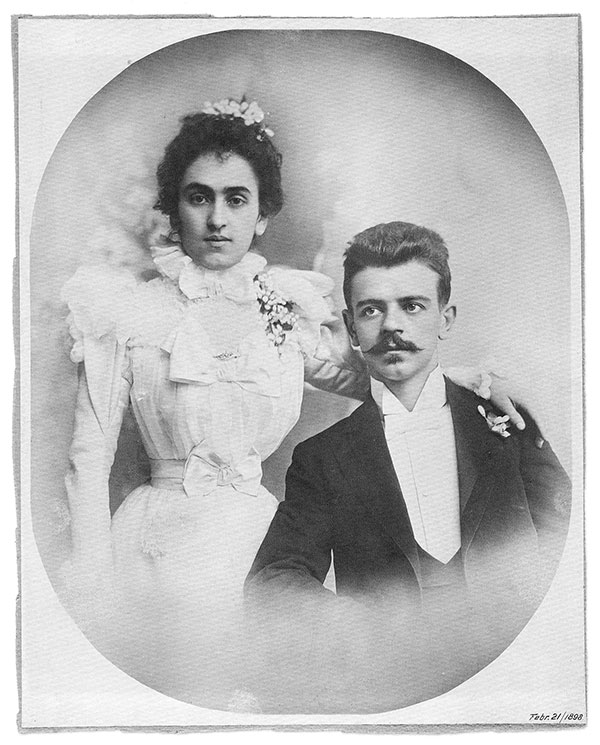
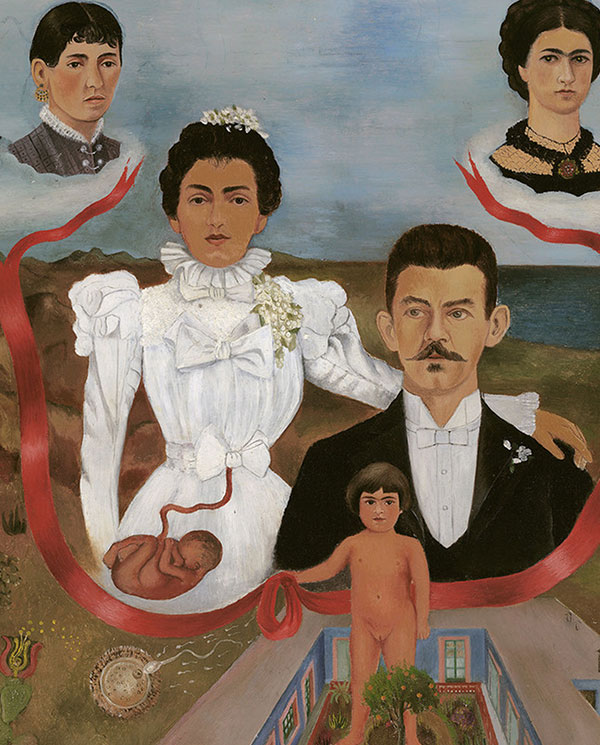
Wedding portrait of Matilde Calderón and Guillermo Kahlo (Anonymous, 1898) / My granparents, my parents and I(1936)
Frida found the perfect image for her family tree in her parents’ wedding photo, in part because of the picture’s composition as well as the moment it represents: the union of both families. «Kahlo painted her maternal grandmother as a simple provincial woman, different from her appearance in the photographs. Her maternal grandfather, however, is painted as a faithful reproduction from the photographic record. Kahlo might have intended to make her grandmother a good match for her indigenous husband. For Kahlo, her Indian heritage was a source of great pride and self-confidence.» (Masayo Nonaka, p. 27).

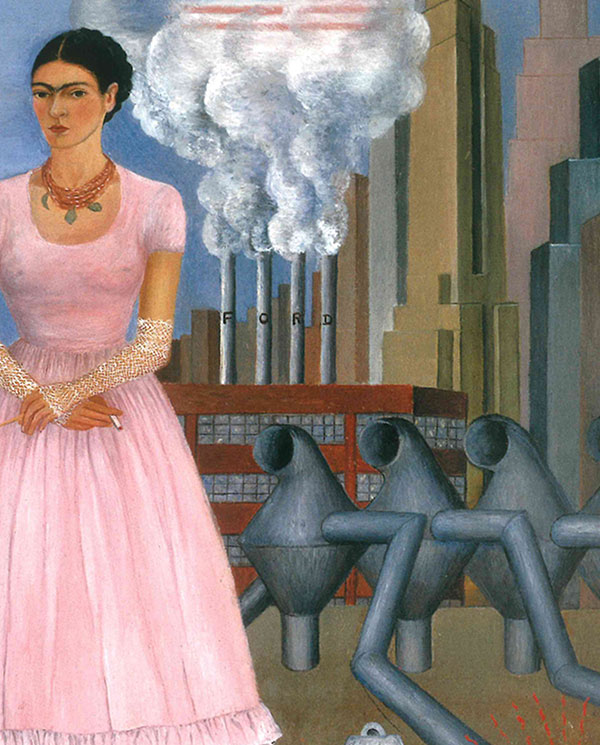
Ford Factory (River Rouge, Detroit) (Charles Scheeler, 1927) / Self-Portrait on the Borderline Between Mexico and the United States (1932)
Frida visited many parts of the world because of her work’s fame, her friends, and her marriage to Diego Rivera. During her travels she got acquainted with the greatest expresions of the capitalist industry at the time, like the manufacturing automobile Ford factory. «Kahlo, along with Rivera, was at the center of a very sophisticated and international intellectual world, with serious admirers (not just lovers) from all sorts of places and disciplines.» (James Oles, p. 251)
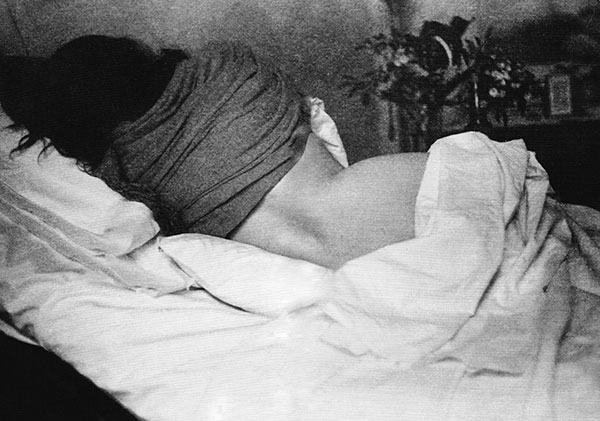
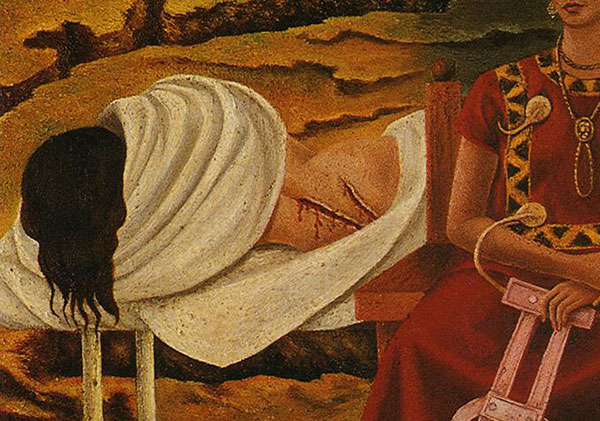
Frida from behind (Nickolas Muray, 1946) / Tree of Hope, Remain Strong (1946)
Frida lived in constant physical pain, this being a crucial element in the development of her identity. To face it, she decided to express it and to make it public. «The sick body, the mangled body, the broken body. In it passion turns into a restless, necessary kind of obsession. In order to make up for lost normality, which is experienced either as pain, disability, or monstrosity –or even the three of them in different proportions–, the body blows up metaphors and symbols. In utter desperation, it resorts to all kinds of prescriptions whether they be medical or religious, forged or colloquial. Whatever helps it re-invent itself in its own hopelessness.» (Mauricio Ortiz, p. 190)
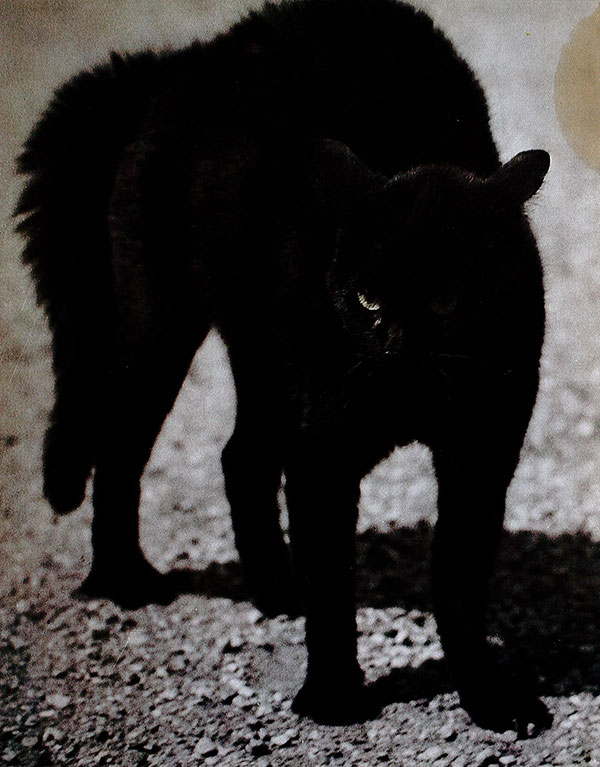
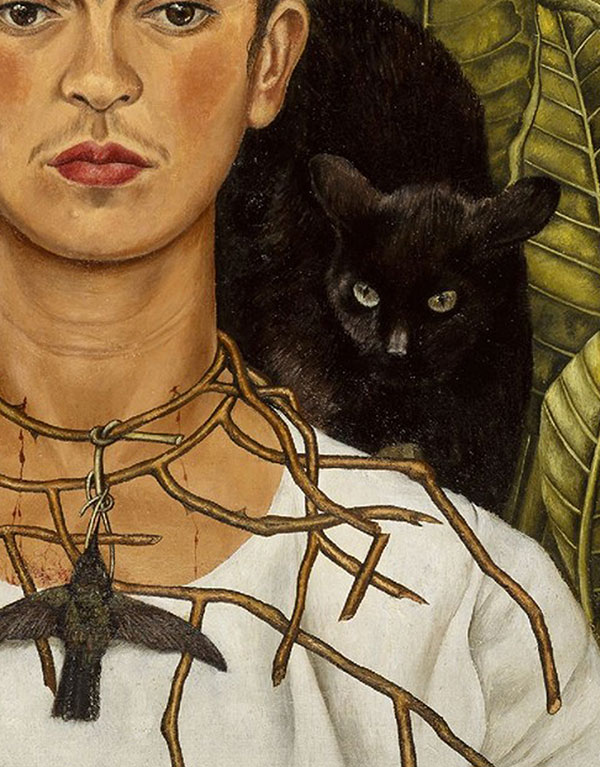
Tomic energy (Martín Munkácsi, n. d.) / Self-Portrait with Thorn Necklace and Hummingbird (1940)
Frida collected works from her favorite photographers, and, in many cases, she would use them as models for her paintings. «There was always a camera in Frida’s house so that important moments, picturesque places, and gatherings with friends, animals, and acquaintances could all be recorded. If Frida was interested these characters and objects would be used as models for her paintings.» (Pablo Ortiz Monasterio, p. 19)
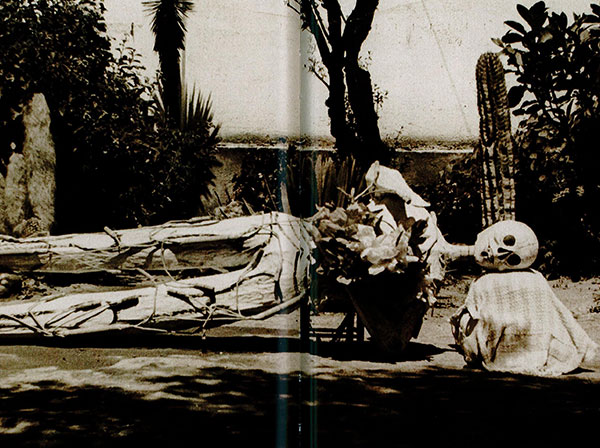
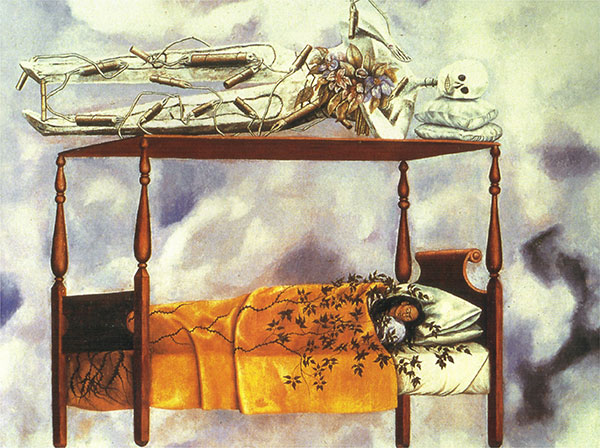
Judas in «papier-mâche» (attributed to Frida Kahlo, n. d.) / The dream (1940)
The motionless image of Judas refers not only to her interest in Mexican traditions (there is a collection of photographs of Judas being burned during the Easter celebration), but to «her obsession with her broken body, handicapped body.» (Pablo Ortiz Monasterio, p. 20)

